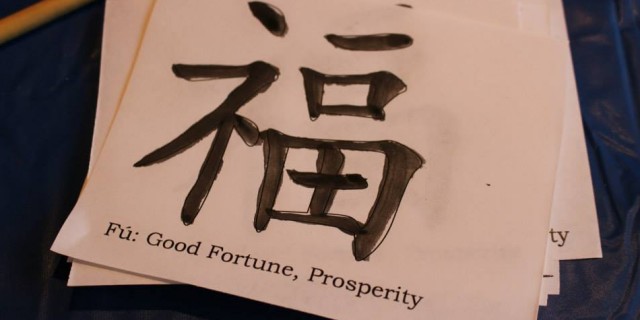Xin nian kuai le! Or “Happy New Year” to our Chinese friends and those around the world who celebrate on a lunar calendar! We asked KU’s Center for East Asian Studies (CEAS) to tell us a little more about the history and celebrations of the Lunar New Year.
- Chinese New Year is a bit of a misnomer; Lunar New Year is a more accurate description of the holiday. It’s widely celebrated by many non- Chinese ethnic groups and nationalities – most countries that use a lunar calendar.
- The date doesn’t change on the lunar calendar but it will on a solar calendar. The date of Lunar New Year changes only within our solar calendar. The lunar calendar contains fewer months and therefore slips within our solar calendar thus the change in the date as it appears on our calendar.
- A new moon (or black moon) determines the date of the New Year. It occurs either in late January or in February on a solar calendar.
- Japan celebrates using a mix of lunar and solar traditions. The country uses the Western calendar and celebrates a new year on the 31st of December but they still carry on the tradition of zodiac animals.

Travel in Zhengzhou and Guizhou before Princeton in Beijing Summer 2014 program. Photo by Patrick Walter. Courtesy of CEAS - Legend says the festival began in attempts to avoid the monster “Nian” (year). In ancient times, people would flee to the mountains to avoid being eaten by Nian. Then, an old man knew to drive the monster away from the villages with the color red, fire and blasting noises. Every year since, houses will paste red couplets on their doors, stay up until midnight and set-off firecrackers to avoid attacks – giving way to many customs that continue today.
- 2016 is the Year of the Monkey. The monkey is the 9th sign of the zodiac. He is very clever, mischievous, successful and well-liked.
- Zodiac years are named after 12 animals. In order they are; Rat, Ox, Tiger, Rabbit, Dragon, Snake, Horse, Goat, Monkey, Rooster, Dog and Boar.
- A legend of the Jade Emperor explains why each animal was selected and its order in the year of the Zodiac. On his birthday he held a swimming race across a fast flowing river. The first 12 animals to make it across would be winners and rewarded with a year named after them. The full legend can be read here http://www.topmarks.co.uk/ChineseNewYear/ZodiacStory.aspx
- Your birth animal (the animal that represents the year you were born) determines your characteristics. Each animal has traits that are reflected in the personality and luck of the person born in that year. All animals have good traits. When people ask what year you were born in in Asia, the answer is not a date so much as an animal.
- Your sign can be used in matchmaking. Your birth animal also gets along better with some zodiac animals than it does with others.

Lanterns in a Buddhist temple in Seoul. Taken during study abroad travel in July 2014. Photo by Nik Schuetz. Courtesy of CEAS - Celebrations aren’t just on one night. They last for 15 days until the Lantern Festival, which marks the end of the Spring Festival (aka the New Year). On this day, lanterns are lit. They’re carried, they’re hung, they’re put on little boats and floated down the rivers. On this day, people can take down all the New Year decorations without fear of superstitious repercussion.
- Forget “spring cleaning,” “end-of-the-year” cleaning is a popular tradition. Celebrators of Lunar New Year, clean house three days before the year begins and don’t clean again until the Lantern Festival.
- Red and gold are popular colors of celebration. Red is the color of the greatest good luck in China while gold is often considered the most beautiful color, the color of emperors and of the robes of Buddhist monks.
- Certain foods will bring good luck and good fortune. Eating dumplings, nian gao rice cakes, oranges, peanuts and fish are common ways to celebrate the New Year.
- Firecrackers and fireworks are set off at midnight. They are meant to scare off evil spirits and ward off misfortune.
- Kids get a little wealthier on New Year’s Day. Parents or grandparents usually give money in red envelopes (called Hong Bao) to children. However, it’s considered rude for the recipient to open the envelopes in front of the giver.
Cover photo courtesy of KU CEAS.
